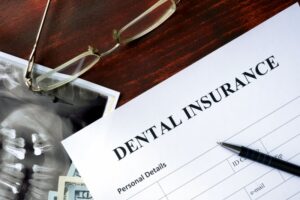Understanding Dental Insurance: 4 Key Things to Know
October 13, 2025

A big worry for many patients about the dentist is how much their oral healthcare is going to cost. It’s easy to imagine you’ll be met with a high invoice, but dental insurance can make it more affordable. As helpful as it can be, navigating and understanding it can be a challenge of its own. There may be different parts of it you may not know, so here are four things you should keep in mind while you talk to your dental office’s front desk team.
1.) Your Deductible
Many dental plans often have an annual deductible that you’ll have to meet. This is the amount of money you’ll have to pay yourself before your insurance is willing to cover any part of your treatments. In general, the more you pay for your plan every month or year, the lower your deductible likely is.
While you’ll have to have this out-of-pocket cost, preventive care is usually exempt from them. You may be able to get a checkup and cleaning without worrying about paying for the entire service.
2.) Reimbursement Level
Once you start getting your benefits after meeting your deductible, it’s important to know your reimbursement level. This is how much your insurance plan is willing to pay for your treatments. Most providers often follow a 100-80-50 payment structure. In short, it means they’ll cover 100% of your preventive care, 80% of basic services (like cavity fillings), and 50% of major restorative procedures (such as crowns).
However, every dental insurance is different. You may have different coverage, so you can talk to the front desk team or your provider directly to learn more about your specific case.
3.) Yearly Maximum
As you start getting your treatments, then however much your plan is paying will be counted toward your yearly maximum. This is the total amount your insurance will cover for your dental care. Once you hit that number, then you’ll go back to playing out-of-pocket. On average, it can range from $1,000 to $2,000, but yours may be different.
Not only that, yearly maximums and deductibles often reset on January 1st every year. While you’ll need to meet the latter again, the former will be set back to zero, so you can start using your benefits.
4.) Coinsurance & Co-Payments
Although these sound the same, insurance plans often only have one or the other. Here’s a quick breakdown of them:
- Co-Payment is a flat fee you’ll pay for a specific treatment or visit. Oftentimes, it’ll be collected before or after your appointment, but it may not contribute to meeting your deductible.
- Coinsurance is how much you’re responsible for paying for in a given service (once you reach your deductible). Generally, it’s a percentage. For instance, if you have 20% coinsurance, then your insurance will pay for 80% and you’ll be billed for the last 20%.
Dental insurance can be confusing, but keeping these four things in mind can get your foot in the door of maximizing your plan! That way, you feel confident using it for your next visit.
About the Author
Dr. Patrick Crowley earned his dental degree from the University of Oklahoma College of Dentistry. He is proud to give the Edmond community the highest-quality care possible. Dr. Crowley is happy to see patients of all ages, getting them the personalized treatment they need. By being in-network with many dental insurance plans, you can feel better about getting what you need to have a happy smile. If it’s time for your next checkup and cleaning, schedule an appointment or call his office at (405) 751-5515.
No Comments
No comments yet.
RSS feed for comments on this post.
Sorry, the comment form is closed at this time.
